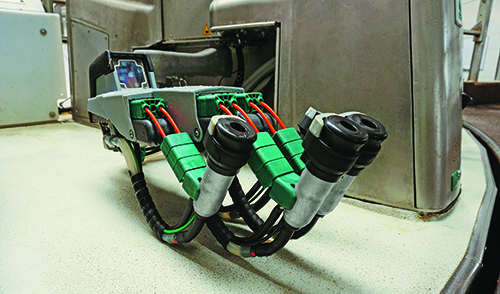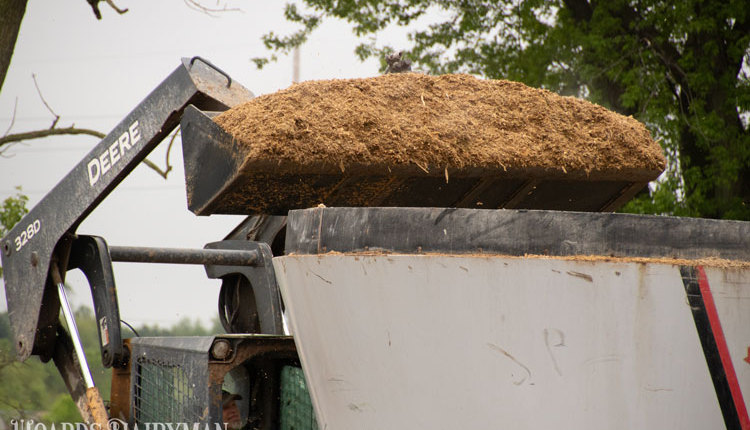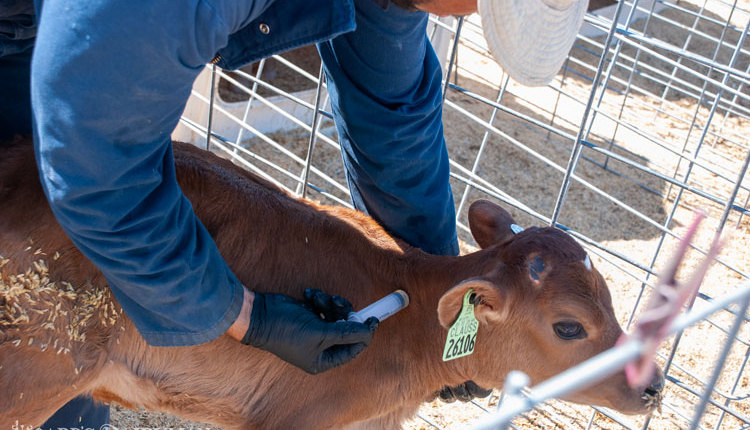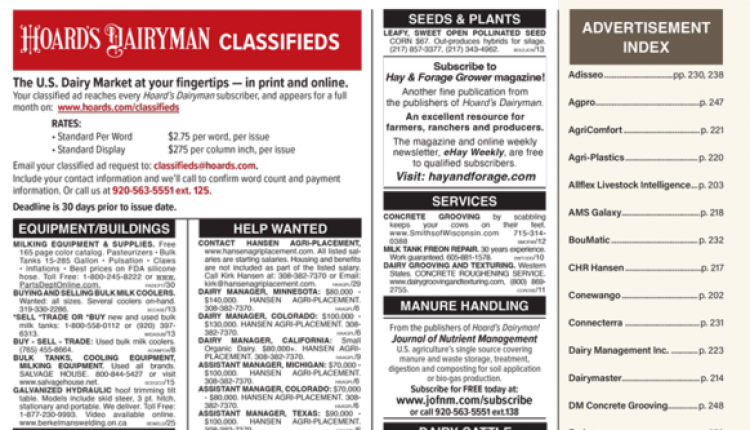
For a cow, the good life is a boring life, and a consistent milking process is one of the best things we can provide. While automating the milking process and other on-farm tasks achieves a level of consistency that humans cannot, it also comes with an overwhelming volume of data that producers are still figuring out how to utilize.
"We are drowning in data, yet starving for information. Of the data we collect from sensor technologies, between 30 and 50 percent of it is not used well or at all," said Case de Koning, dairy campus managing director, at the Netherland's Wageningen University.
Sensor technologies and electronics, such as those incorporated into robotic milking systems, enable us to track a wide array of metrics, but they aren't objective - they are simply another tool to aid our decision-making process.
"When it comes to farming and automation, multiple solutions exist, and automation will vary based on the needs of a region or country. For example, a primary reason European farmers are investing in robotics is for the social flexibility it provides," he noted at GEA's Automation Day 4.0 in Teichröda, Germany.
A labor solution
"As a general rule of thumb, farms all over the world are expanding to meet a growing demand for milk. As farms grow, they face the dilemma of acquiring more expensive labor or automating," said de Koning.
The first automatic milking system was installed in the Netherlands in 1992. To date, just shy of 25,000 farms worldwide have automated their milking process. For the two dairies we visited in Teichröda and Ottendorf, a robotic rotary parlor was a solution to a future labor shortage. "In Eastern Germany, labor will be a future problem. Even paying 10 per hour ($11 U.S.), finding people who want to stay and work seven hours per day is becoming problematic, and dairies are looking for alternatives to it," said Walter Weyman, a veterinarian and consultant for the farm at Ottendorf.
"For larger farms in this area, robotic rotaries are the future if people don't want to milk 24 hours per day. Automation requires the right people with the right mindset; you still need to have contact with the cow," noted Stefan Blöttner, son of the Teichröda farm manager and referent with the Thüringer Farmer's Association.
Automation at quality's expense
Globally, the demand for milk exists, yet milk quality cannot be the trade-off for automation.
"A general yield gain is experienced with automatic milking, but the gain is limited and varies widely between herds. Producers installing robots must be mindful of their milk production and quality. Going forward, teat cleaning and pretreatment must be improved," de Koning cautioned.
"With the automation hype, milk quality isn't where it needs to be, but technology is greatly improving every day (in certain parts of the world) along with herd management practices," added Armin Tietjen, GEA's executive vice president.
In the European Union, a detergent solution is used to wash teats as regulations prohibit predipping from occurring in the liner; postdipping, however, can and does occur in the cluster. For markets outside the EU, pre- and postdipping will occur in the liner in GEA's systems.
The end of an era
While automation is more pervasive in Europe compared to the States, it is just one of the factors that has changed the face of the European dairy industry as of late. As quota removal loomed, dairies made one of three choices: invest and automate, remain the same or close the milk shed doors.
"The German automation market boomed the past three years as dairymen modernized and expanded production to prepare for the future," noted Tietjen. "They grew production capacity and made huge investments. Over the next two to three years, they may not make investments as they cope with their recent growth and adjust to a more volatile market.
"Interest rates are low, but banks are not convinced about agriculture. They ask for a lot of scenarios and specs before a producer can get a loan. Compounding this, milk price dropped significantly in some areas and barely covers production costs. Right now, producers are occupied with running a farm, not making investments," commented Tietjen.
"Many smaller farms sold their quota and stopped milking. Midsized farms built new and added cow numbers, while larger dairies invested and are now in a holding pattern," Blöttner added.
At the time of the event, four German dairies had installed the DairyProQ robotic rotary system, and another farm within the country, along with two in Canada, were slated for installation.
"The robotic rotary installation process starts with market and country qualification," noted Steve Pretz, vice president of large project sales. "It has to be a market that will have many users - not just one. The country also has to be adaptable to the technology to support it," he added.
"Once a country is qualified, we are dependent on the dealer network to have the capacity to support and maintain the system," added Pretz. "Since the system is still in a preliminary launch phase, the customer also needs to be considered; a robotic rotary won't be the right fit for every dairy. We also need to identify any major problems in the herd such as lameness, the number of three-quartered cows or if there are a significant number that need to be given oxytocin," he added.
While there are still questions on exact installation time, the belief is that it shouldn't take any longer than a conventional rotary. "Due to the robotic components, the equipment weighs more and requires a different platform. But once the platform is up, it typically takes about 20 minutes per stall to install the stainless steel dividers. All of the robotic components are integrated into the stall divider; each divider can also be removed and serviced without having to shut down the parlor," noted Paul Burdell, robotic sales specialist.
"Before making this leap, producers need to evaluate all parlor avenues and determine their best option and fit," noted Burdell.
"It is ultimately the farmer's choice to go with an automatic milking system or a traditional parlor. Their management skills are the key factor for success; not every farmer is ready for every technology," Tietjen added.










